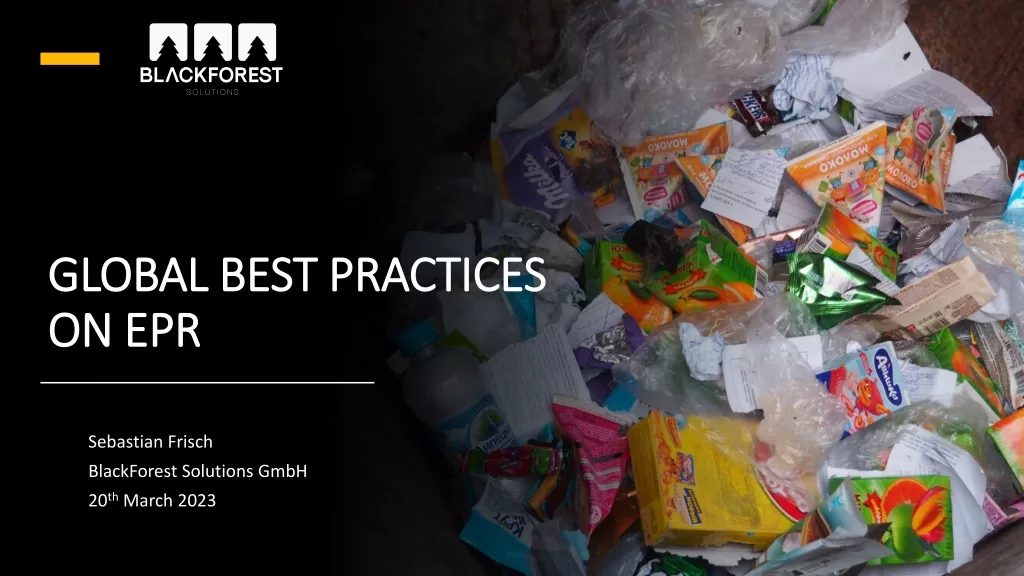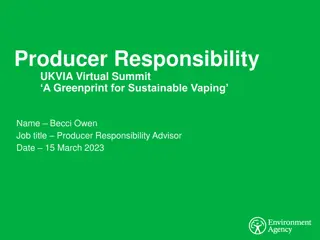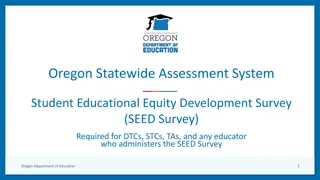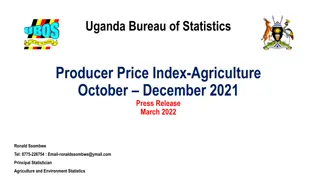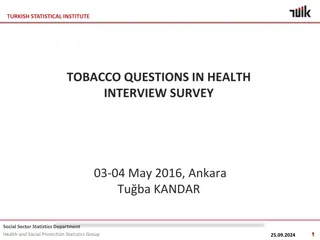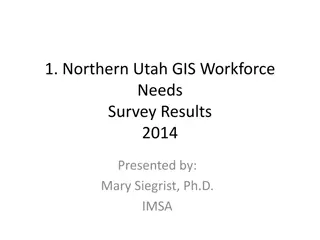Insights from the 2017 CAFO Producer Survey
The 2017 CAFO Producer Survey provides valuable information on livestock production practices. Findings include the types of animals raised, the number of animals typically raised, and how they are confined. The survey also reveals response rates and confidence levels, shedding light on the livestock industry.
Download Presentation

Please find below an Image/Link to download the presentation.
The content on the website is provided AS IS for your information and personal use only. It may not be sold, licensed, or shared on other websites without obtaining consent from the author. Download presentation by click this link. If you encounter any issues during the download, it is possible that the publisher has removed the file from their server.
E N D
Presentation Transcript
June 2017 June 2017 - - Surveys sent by mail to producers Surveys sent by mail to producers identified by 2012 Land Use Survey and those identified by 2012 Land Use Survey and those CAFOs Issued Permits CAFOs Issued Permits 247 Surveys sent 123 Responses Response Rate: 50% Confidence Level: 95% This tells you how sure you can be of the error of margin. It is expressed as a percentage and represents how often the true percentage of the population who would pick an answer lies within the margin of error Margin of Error: 6.3% This is the plus-or-minus figure usually reported in newspaper or television opinion poll results. For example, if you use a margin of error of 6% and 47% percent of your sample picks an answer, you can be sure that if you had asked the question to the entire population, between 41% (47-6) and 53% (47+6) would have picked that answer.
Do you raise Livestock? 123 Responses 106 Yes 17 No Do You Raise Livestock? 13.8% 86.20% Yes No
What Type of Animals do you Raise? What Type of Animals Do You Raise? 105 Responses 92 raised Beef Cattle 13 raised Dairy Cattle 5 raised Swine 5 raised Poultry 11 raised Sheep 19 raised Horses 18.10% 10.50% 4.80% 4.80% 87.60% 12.30% Beef Cattle Dairy Cattle Swine Poultry Sheep Horses
At any one time during the year how many animals do you raise? 106 Responses Number of Responses Number of Animals Percentage 1 to 100 animals 36 34% 72% have less than 500 animal units or a class 4 operation currently a permitted use 17% have between 501 and 999 AU or a class 3 operation currently a conditional use 7% have between 1000 and 1999 AU or a class 2 operation currently a conditional use 4% have over 2,000 AU or a class 1 operation currently a conditional use 101 to 300 animals 28 26% 301 to 500 animals 13 12% 501 to 999 animals 18 17% 1,000 to 2,000 animals 7 7% Over 2,000 4 4% TOTAL 106
How are the animals confined? How are the animals confined? 106 Responses 35 Open Lot Only 6 Open Lot/Under Roof/Free Range 7 Open Lot/Under Roof 32 - Open Lot/Free Range 3 Under Roof/Free Range 6 - Under Roof Only 17 Free Range 16% 33% 6% 3% 30% 6% 7% Open Lot Only Open Lot/Under Roof/Free Range Open Lot/Under Roof Open Lot/Free Range Under Roof/Free Range Under Roof Only Free Range
Do You Plan To Increase your Herd Size in the Next 20 Years? Do You Plan To Increase your Herd Size in the Next 20 Years? 106 Responses 60 - No 43 -Yes 3 No Opinion 3% 41% 57% No Yes Not Sure
Current operations planning on expanding in the Next 20 years 41% of all producers plan on expanding Under 100 Animals 22% 101 to 300 Animals 36% 301 to 500 Animals 54% 501 to 999 Animals 67% 1,000 to 1,999 Animals 57% Over 2,000 Animals 50%
Average Size of Expansion over the Next 20 years Under 100 Animals - 22% (15) Plan on Expanding Range 60 to 2,000 Average Expansion - 70 101 to 300 Animals - 36% (19) Plan on Expanding Range 50 to 1,700 Average Expansion 470 301 to 500 Animals - 54% (13) Plan on Expanding Range 200 to 1,000 Average Expansion 490 501 to 999 Animals - 67% (23) Plan on Expanding Range 400 to 9,000 Average Expansion 990 1,000 to 1,999 Animals - 57% (8) Plan on Expanding Range 500 to 3,000 Average Expansion 1,250 Over 2,000 Animals - 50% (4) Plan on Expanding Range 2,000 to 15,000 Average Expansion 2,000
What is your perception regarding Codington County's existing CAFO regulations? 106 Responses Just Right (53) Too Strict (11) Too Relaxed (28) No Response (14) 13% 27% 79% of those that thought the responses were too relaxed raised less than 300 animals 64% of those that thought the responses were just right raised less than 500 animals 46% of those that thought the responses were too restrictive raised more than 500 animals 50% 10% Too Relaxed Just Right Too Restrictive No Opinion
Codington County currently requires new and expanding CAFOs over 2,000 animal units to be located at least 1/2 mile from the nearest neighboring house. Is this setback adequate? 106 Responses 64 - Yes 36 - No 6 No Opinion 6% 34% 60% Yes No No Opinion
What should the setback be (2,000 Animal Units)? Perception of Setbacks (2000) All CAFO Producers 0.9% 10.4% 2.8% 6.6% 36 Not Adequate Responses Mile (6) 5/8 Mile (1) Mile (3) 1 Mile (7) 2 Miles (5) 3 Miles (1) 5 Miles (2) Not Allowed (1) No Opinion (10) 4.7% 0.9% 1.9% 0.9% 15.1% 56.0% 5/8 mile 3/4 mile 1 mile 2 miles 3 miles 5 miles Not Allowed No Opinion 1/2 Mile Too Restrictive
What should the setback be (3,000 Animal Units)? Perception of Setbacks (3000) All CAFO Producers 0.9% 9.4% 36 CAFO Setback Not Adequate Responses Mile (7) 1 Mile (3) 1.5 Miles (2) 2 Miles (4) 3 Miles (4) 5 Miles (2) Not Allowed (1) No Response (13) 19.8% 42.5% 1.9% 3.8% 4.7% 7.5% 8.5% 0.9% 1/2 mile 3/4 mile 1 mile 1.5 miles 2 miles 3 miles 5 miles no response Not Allowed Too Restrictive
What should the setback be (4,000 Animal Units)? Perception of Setbacks (4000) All CAFO Producers 9.4% 2.8% 36 CAFO Setback Not Adequate Responses Mile (4) 1 Mile (4) 1.5 Miles (5) 2.5 Miles (2) 3 Miles (2) 4 Miles (2) 5 Miles (2) Not Allowed (1) No Opinion (14) 35.8% 20.8% 1.9% 1.9% 5.7% 1.9% 6.6% 11.3% 0.9% 0.9% 1/2 mile 3/4 mile 1 mile 1.5 miles 2 miles 2.5 miles 3 miles 4 miles 5 miles no response Not Allowed Too Restrictive
What should the setback be (5,000 Animal Units)? Perception of Setbacks (5000) All CAFO Producers 2.8% 7.5% 36 CAFO Setback Not Adequate Responses 15/16 Mile (1) 1 Mile (8) 2 Miles (4) 3 Miles (3) 5 Miles (4) Not Allowed (3) No Opinion (13) 37.7% 19.8% 3.8% 3.8% 5.7% 0.9% 17.9% 1/2 mile 15/16 mile 1 mile 2 miles 3 miles 5 miles no response Not Allowed Too Restrictive
What should the setback be (5,000+ Animal Units)? Perception of Setbacks (5000+) All CAFO Producers 4.70% 7.50% 36 CAFO Setback Not Adequate Responses 15/16 Mile (1) 1 Mile (7) 1.5 Miles (2) 2 Miles (2) 2.5 Miles (1) 3 Miles (4) 4 Miles (1) 5 Miles (4) Not Allowed (4) No Opinion (10) 29.20% 19.80% 1.90% 0.90% 4.70% 17.90% 0.90% 4.70% 2.80% 2.80% 1.90% 15/16 mile 1/2 mile 3/4 mile 1 mile 1.5 miles 2 miles 2.5 miles 3 miles 4 miles 5 miles no response Not Allowed Too Restrictive
General Observations 37% of existing producers find setback from residences adequate for 5000+ animal unit CAFOs 45% of existing producers find setback from residences adequate for 5000 animal unit CAFOs 45% of existing producers find setback from residences adequate for 4000 animal unit CAFOs 52% of existing producers find setback from residences adequate for 3000 animal unit CAFOs 64% of existing producers find setback from residences adequate for 2000 animal unit CAFOs Most producers raise less than 1,000 Animal Units Most Producers find existing rules to be adequate - 60% 40% of existing producers plan on expanding over the next 20 years Based on survey May need to develop a graduated setback system






